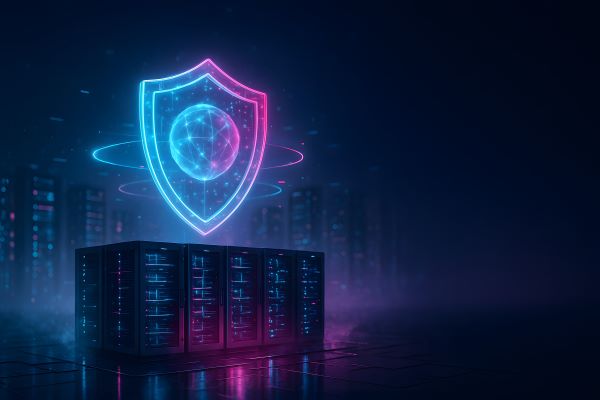
Cybersecurity is an ever-evolving field, and as the frequency and sophistication of cyberattacks continue to rise, businesses need proactive ways to detect and respond to threats. When it comes to building a strong defense, indicators of compromise (IOCs) are invaluable tools in your cybersecurity arsenal. These data points signal when a breach has occurred, helping teams respond more quickly and effectively. By understanding and using this information, you can more easily protect your business from bad actors.
What Are Indicators of Compromise (IOC)?
Indicators of compromise (IOCs) are pieces of forensic evidence that suggest a system has been infiltrated by a cybercriminal. Essentially, they are the “red flags” that security professionals look for when determining whether a breach has occurred. These indicators are critical because they provide essential data that can help identify and isolate threats quickly, minimizing the potential damage.
What Is the Difference Between IOAs and IOCs?
Indicators of attack (IOAs) are another crucial piece of data in the realm of cybersecurity. There are key differences between IOAs and IOCs:
-
IOAs are real-time signs that an attack may be currently happening. They focus on identifying malicious actions and activity while an attack is in progress.
-
IOCs are traces left behind by attackers after an incident has occurred. They point to evidence of a past attack and help cybersecurity professionals understand the scope of the compromise.
Common Examples of IOCs
There are several common types of IOCs that security teams can monitor to detect potential breaches or malicious activity. Some of the most frequently tracked indicators include:
-
Network Traffic Anomalies: If there is a significant increase in outbound traffic or connections from unexpected locations, it may signal a data exfiltration attempt or other malicious activity.
-
Unusual Sign-In Attempts: Multiple failed login attempts or sign-ins from unexpected locations (e.g., regions where the company does not operate) can indicate compromised credentials or brute force attacks.
-
Privileged Account Irregularities: If privileged or admin accounts exhibit irregular activity, such as unauthorized access attempts or privilege escalation, it may signal an insider threat or external attack.
-
Changes to System Configurations: Unexpected changes to system configurations, such as disabling security software or enabling remote access, can be an indicator of a cyberattack.
-
Numerous Requests for a Single File: This can point to a data exfiltration attempt, where an attacker is trying to access specific sensitive information.
-
Unexpected Software Installations or Updates: Malware or ransomware often comes in the form of unauthorized software installations. Monitoring for unexpected changes helps detect these threats early.
-
Unusual DNS Requests: Suspicious DNS traffic may indicate that a system is communicating with a command-and-control (C2) server, which is often used in cyberattacks.
-
HTML Response Sizes: A sudden increase in the size of HTML responses can signal that data is being exfiltrated.
-
Mismatched Port-Application Traffic: If an application is communicating through an unusual port, it might indicate an attempt to exploit the system.
How Are IOCs Used in Threat Detection and Response?
IOCs act as the first line of defense in threat detection and response, serving as an early warning system. By continuously looking for specific IOCs, such as irregular login attempts, abnormal file access, or strange network traffic, it becomes far easier to spot incidents in real time. Tools like Security Information and Event Management (SIEM) systems automate this process, alerting teams to suspicious activities as they happen.
Once identified, IOCs give incident response professionals the clear data needed to act quickly and efficiently. For example, an unexpected DNS request might prompt a team to isolate an infected machine or block a malicious server from communicating with the network.
Many organizations also use Extended Detection and Response (XDR) solutions, which incorporate IOCs to enhance threat detection and enable faster, more automated responses with fewer manual resources involved. By integrating IOCs into these tools, organizations can detect and stop attacks more swiftly, preventing further damage to systems and data.
How to Identify Cybersecurity IOCs
Identifying IOCs is not necessarily a simple task, but it is crucial to protecting your systems. Typically, you can gather IOCs through a combination of manual forensics and automated detection systems. Given the complexity of this task, it is usually best handled by cybersecurity professionals with the expertise to properly analyze and act on the data.
Here are the basic building blocks of the IOC identification process:
-
Continuous Monitoring: Using SIEM or XDR tools, cybersecurity professionals can continuously monitor network traffic, file changes, and system behaviors for known IOCs. These tools flag potential threats in real-time, enabling faster responses.
-
Forensic Analysis: Upon detecting an anomaly, forensic tools help security teams review log files and track the origin of suspicious activity. This can confirm whether an attack is ongoing and provide details about the nature of the threat.
-
Collaboration with Threat Intelligence Networks: Many organizations leverage threat intelligence platforms to share IOCs and gain insights into new types of attacks. Collaborating with others in your industry or via public-private partnerships can enhance your detection efforts.
-
Threat Modeling: Threat modeling helps you understand how IOCs correlate to potential attack paths. By mapping out the attacker’s techniques, you can improve detection and response strategies.
Best Practices for Managing IOCs
To effectively manage and utilize IOCs for cybersecurity, organizations need to take a systematic approach based on a few basic best practices:
Standardizing IOC Formats
To guarantee compatibility across systems and improve the ease of sharing IOCs, it’s important to standardize their formats. Formats such as STIX (Structured Threat Information eXpression) and TAXII (Trusted Automated eXchange of Indicator Information) are widely used in the industry.
Standardized IOCs allow organizations to share threat data seamlessly with other vendors, or even within different parts of their own operations. This ensures that your systems are always up to date with the latest intelligence, and they can more efficiently detect emerging threats.
Prioritizing IOCs Based on Impact
Not all IOCs are equally important, so it’s a smart idea to prioritize them based on the severity and potential business impact. While some indicators may point to minor anomalies, others could signal significant risks.
For example, anomalous privilege account activity or network traffic might be signs of a major breach, whereas changes in system files could indicate malware. By understanding the severity of each IOC and its potential consequences, your team can respond to the most urgent threats first. This prioritization can prevent the overwhelming backlog of threats that might go unnoticed in a larger environment.
Continuously Updating Your IOC Database
Cyber threats are constantly evolving, and your IOC database should do the same. Regularly updating your IOC databases and threat detection systems is essential for staying ahead of new attack tactics and identifying the latest signs of a security compromise. Using threat intelligence feeds and automating updates where possible helps keep your responses fast, accurate, and comprehensive.
Educating Employees to Spot Potential Threats
Your employees are the first line of defense when it comes to detecting phishing attempts or suspicious activities that may indicate an attack. Providing ongoing training can improve their ability to recognize potential threats and report them early. This human layer of detection complements your technical defenses and helps catch IOCs that automated systems may miss, particularly in cases of social engineering or spear phishing attacks.
Collaborating with a Trusted Professional
Even with the best tools and processes in place, managing IOCs can be complex and resource-intensive. Working with a trusted cybersecurity partner or professional team can enhance your ability to identify, manage, and respond to IOCs effectively. These experts can help streamline your security processes, introduce advanced detection methods, and assist in the continuous optimization of your security strategy.
Partnering with a team that specializes in threat detection and response can reduce the workload on your in-house team, improve response times, and provide you with valuable insights that strengthen your security posture.
Proactive Threat Hunting with IOCs
Integrating IOC monitoring into your cybersecurity strategy enables early detection and rapid response to cyber threats, minimizing potential damage to your systems and data. By identifying and acting on IOCs, your organization can prevent costly breaches, safeguard critical assets, and maintain operational continuity. Consistent monitoring of IOCs also mitigates financial, operational, and reputational risks, while helping organizations comply with regulations such as GDPR and HIPAA.
For businesses committed to proactive security, leveraging IOCs as part of a well-rounded threat detection and response strategy is essential for staying ahead of attackers.
Schedule a conversation with Quest today to discover how we can help strengthen your defenses with our tailored cybersecurity solutions.
I hope you found this information helpful. As always, contact us anytime about your technology needs.
Until next time,
Tim


